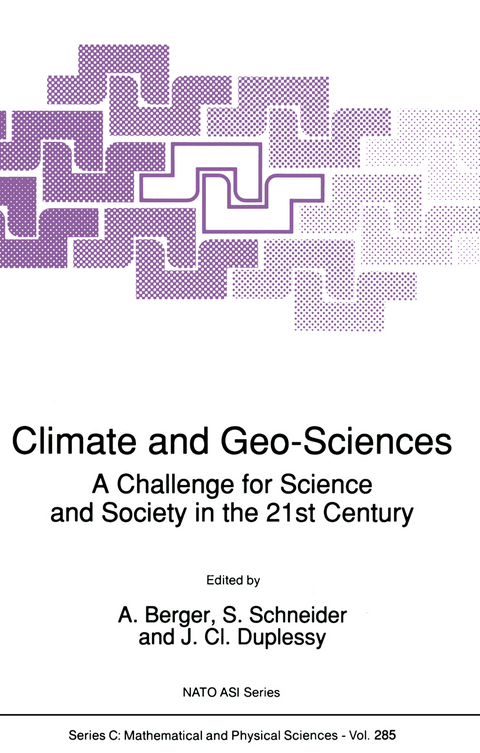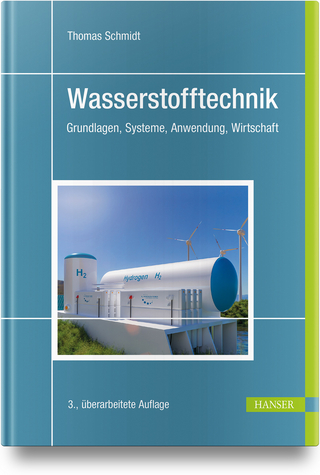
Climate and Geo-Sciences
Springer (Verlag)
978-0-7923-0412-8 (ISBN)
Section 1 — Climate Record / What can We Learn from Data ?.- Pre-Pleistocene climates : data and models.- Archaean atmosphere-biosphere interactions.- Dating proxy data.- The spectral characteristics of pre-Quaternary climatic records, an example of the relationship between the astronomical theory and Geo-Sciences.- Polar ice cores and climate.- Intermediate and deep water characteristics during the last glacial maximum.- Oceanic response to orbital forcing in the late Quaternary : observational and experimental strategies.- Recent developments in Quaternary paleoclimatology.- Paleoclimate data for studies of global climate change and earth system science.- Paleoclimate perspectives on a greenhouse warming.- Section 2 — Understanding Climate and Climatic Changes.- Deceptively-simple models of climatic change.- Climate predictability : a dynamical view.- Coupled ocean and sea-ice models : review and perspectives.- Atmospheric chemistry — climate interactions.- Ice and climate studies.- Volcanoes and climate.- Global climatic effects of a nuclear war: an interdisciplinary problem.- Land surface processes in climate models : status and prospects.- Tropical deforestation and climatic change.- The role of the hydrological cycle in climate.- Changes in ocean temperature and the scientific strategy for international climate research.- Section 3 — Simulation of the Greenhouse Warming.- Model projections of the climatic changes induced by increased atmospheric CO2.- Climate sensitivity : model dependence of results.- Climate response to greenhouse warming : the role of the ocean.- Unresolved issues and research needs pertaining to the transient climatic response to a CO2 increase.- Global biogeochemical cycles and climate.- Anthropogenic and natural perturbations of thecarbon cycle.- Modelling biospheric control of carbon fluxes between atmosphere, ocean and land in view of climatic change.- Section 4 — Technology for Climate Studies.- Supercomputing and massive parallelism.- Data management methods; data for Europe.- Satellites and climate.- Radiation budget and clouds.- Section 5 — Climate Environment and International Security.- The global commons and national security.- The global environmental issues — an approach to their solution.- Human impact on the environment.- Society and future climate change.- Global climatic changes and geopolitics: pressures on developed and developing countries.- Climate change in the context of multiple threats.- Climate and public policy in the United States Congress.- Climatic changes and water resources development.- Hydrological impacts — What if we are right ?.- Climate change : effects on biological systems.- Forest productivity and health in a changing atmospheric environment.- Climate environment in international security: the case of deforestation in the brazilian amazon.- Section 6 — Conference Overview and Recommendations.- Where is climate research going ?.- Authors Index.- Subjects Index.
| Erscheint lt. Verlag | 31.8.1989 |
|---|---|
| Reihe/Serie | NATO Science Series C ; 285 |
| Zusatzinfo | XXVI, 724 p. |
| Verlagsort | Dordrecht |
| Sprache | englisch |
| Maße | 155 x 235 mm |
| Themenwelt | Naturwissenschaften ► Biologie ► Ökologie / Naturschutz |
| Naturwissenschaften ► Geowissenschaften ► Geologie | |
| Naturwissenschaften ► Geowissenschaften ► Hydrologie / Ozeanografie | |
| Naturwissenschaften ► Geowissenschaften ► Meteorologie / Klimatologie | |
| ISBN-10 | 0-7923-0412-8 / 0792304128 |
| ISBN-13 | 978-0-7923-0412-8 / 9780792304128 |
| Zustand | Neuware |
| Informationen gemäß Produktsicherheitsverordnung (GPSR) | |
| Haben Sie eine Frage zum Produkt? |
aus dem Bereich


